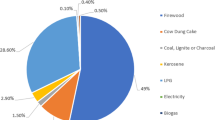Abstract
An outdoor summer study on thermal physiology along subjects’ pathways was conducted in a Japanese city using a unique wearable measurement system that measures all the relevant thermal variables: ambient temperature, humidity, wind speed (U) and short/long-wave radiation (S and L), along with some physio-psychological parameters: skin temperature (T skin), pulse rate, subjective thermal sensation and state of body motion. U, S and L were measured using a globe anemo-radiometer adapted use with pedestrian subjects. The subjects were 26 healthy Japanese adults (14 males, 12 females) ranging from 23 to 74 years in age. Each subject wore a set of instruments that recorded individual microclimate and physiological responses along a designated pedestrian route that traversed various urban textures. The subjects experienced varying thermal environments that could not be represented by fixed-point routine observational data. S fluctuated significantly reflecting the mixture of sunlit/shade distributions within complex urban morphology. U was generally low within urban canyons due to drag by urban obstacles such as buildings but the subjects’ movements enhanced convective heat exchanges with the atmosphere, leading to a drop in T skin. The amount of sweating increased as standard effective temperature (SET*) increased. A clear dependence of sweating on gender and body size was found; males sweated more than females; overweight subjects sweated more than standard/underweight subjects. T skin had a linear relationship with SET* and a similarly clear dependence on gender and body size differences. T skin of the higher-sweating groups was lower than that of the lower-sweating groups, reflecting differences in evaporative cooling by perspiration.









Similar content being viewed by others
References
Ahmed KS (2003) Comfort in urban spaces: defining the boundaries of outdoor thermal comfort for the tropical urban environments. Energ Build 35:103–110
Bernard T, Gavarry O, Bermon S, Glacomoni M, Marconnet P, Flagairette G (1997) Relationships between oxygen consumption and heart rate in transitory and steady states of exercise and during recovery: influence of type of exercise. Eur J Appl Physiol 75:170–176
de Dear RJ (1987) Ping pong globe thermometers for mean radiant temperature: heating and ventilating engineer. J Air Cond 60(681):10–12
de Dear R (2011) Revisiting an old hypothesis of human thermal perception: alliesthesia. Build Res Inform 39:108–117
Fox RH, Lofstedt BE, Woodward PM, Eriksson E, Werkstrom B (1969) Comparison of thermoregulatory function in men and women. J Appl Physiol 26:444–453
Gagge AP, Stolwijk JAJ, Nishi Y (1971) An effective temperature scale based on a simple model of human physiological regulatory response. ASHRAE Trans 77:246–262
Hardy JD, DuBois EF (1938) The technique of measuring radiation and convection. J Nutr 15:461–475
Ishii T, Tsujimoto M, Yoon G, Okumiya M (2009) Cooling system with water mist sprayers for mitigation of heat-island. In Proceedings of the Seventh International Conference on Urban Climate, ICUC-7, Yokohama, Japan, June 28-July 3 2009.
Jendritzky G, de Dear R, Havenith G (2012) UTCI—why another thermal index? Int J Biometeorol 56:421–428
Johansson E, Thorsson S, Emmanuel R, Kruger E (2014) Instruments and methods in outdoor thermal comfort studies—the need for standardization. Urban climate (in printing).
Kanda M, Moriwaki R, Kasamatsu F (2006) Spatial variability of both turbulent fluxes and temperature profiles in an urban roughness layer. Bound-Layer Meteorol 121:339–350
Lovegrove BG (2009) Modification and miniaturization of Thermochron iButtons for surgical implantation into small animals. J Comp Physiol B 179:451–458
Nakayoshi M, Kanda K, de Dear R (submitted) Globe anemo-radiometer. The above unpublished paper is uploaded in the following link for our reviewers. https://dl.dropboxusercontent.com/u/76785677/GAR_Nakayoshi_et_al.pdf
Niimi Y, Matsukawa T, Sugiyama Y, Shamsuzzaman ASM, Ito H, Sobue G, Mano T (1997) Effect of heat stress on muscle sympathetic nerve activity in humans. J Auton Nerv Syst 63:61–67
Pantavou K, Theoharatos G, Santamouris M, Asimakopoulos D (2013) Outdoor thermal sensation of pedestrians in a Mediterranean climate and a comparison with UTCI. Build Environ 66:82–95
Spagnolo J, de Dear R (2003) A field study of thermal comfort in outdoor and semi-outdoor environments in subtropical Sydney Australia. Build Environ 38:721–738
Sugawara H, Narita K, Mikami T (2004) Representative air temperature of thermally heterogeneous urban areas using the measured pressure gradient. J Appl Meteorol 43:1168–1179
Thorsson S, Honjo T, Lindberg F, Eliasson I, Lim E-M (2007a) Thermal comfort and outdoor activity in Japanese urban public places. Environ Behav 39:660–684
Thorsson S, Lindberg F, Eliasson I, Holmer B (2007b) Different methods for estimating the mean radiant temperature in an outdoor urban setting. Int J Climatol 27:1983–1993
Vennon HM (1932) The measurement of radiant heat in relation to human comfort. J Ind Hyg 14:95–111
Acknowledgments
This research was financially supported by the MEXT/JSPS KAKENHI Grant Number 227335 (Grant-in-Aid for JSPS Fellows) and the Research Program on Climate Change Adaptation (RECCA) from the Ministry of Education, Culture, Sports, Science and Technology, Japan. The research group also extends its appreciation to city employees in the Tajimi municipal government.
Author information
Authors and Affiliations
Corresponding author
Rights and permissions
About this article
Cite this article
Nakayoshi, M., Kanda, M., Shi, R. et al. Outdoor thermal physiology along human pathways: a study using a wearable measurement system. Int J Biometeorol 59, 503–515 (2015). https://doi.org/10.1007/s00484-014-0864-y
Received:
Revised:
Accepted:
Published:
Issue Date:
DOI: https://doi.org/10.1007/s00484-014-0864-y




